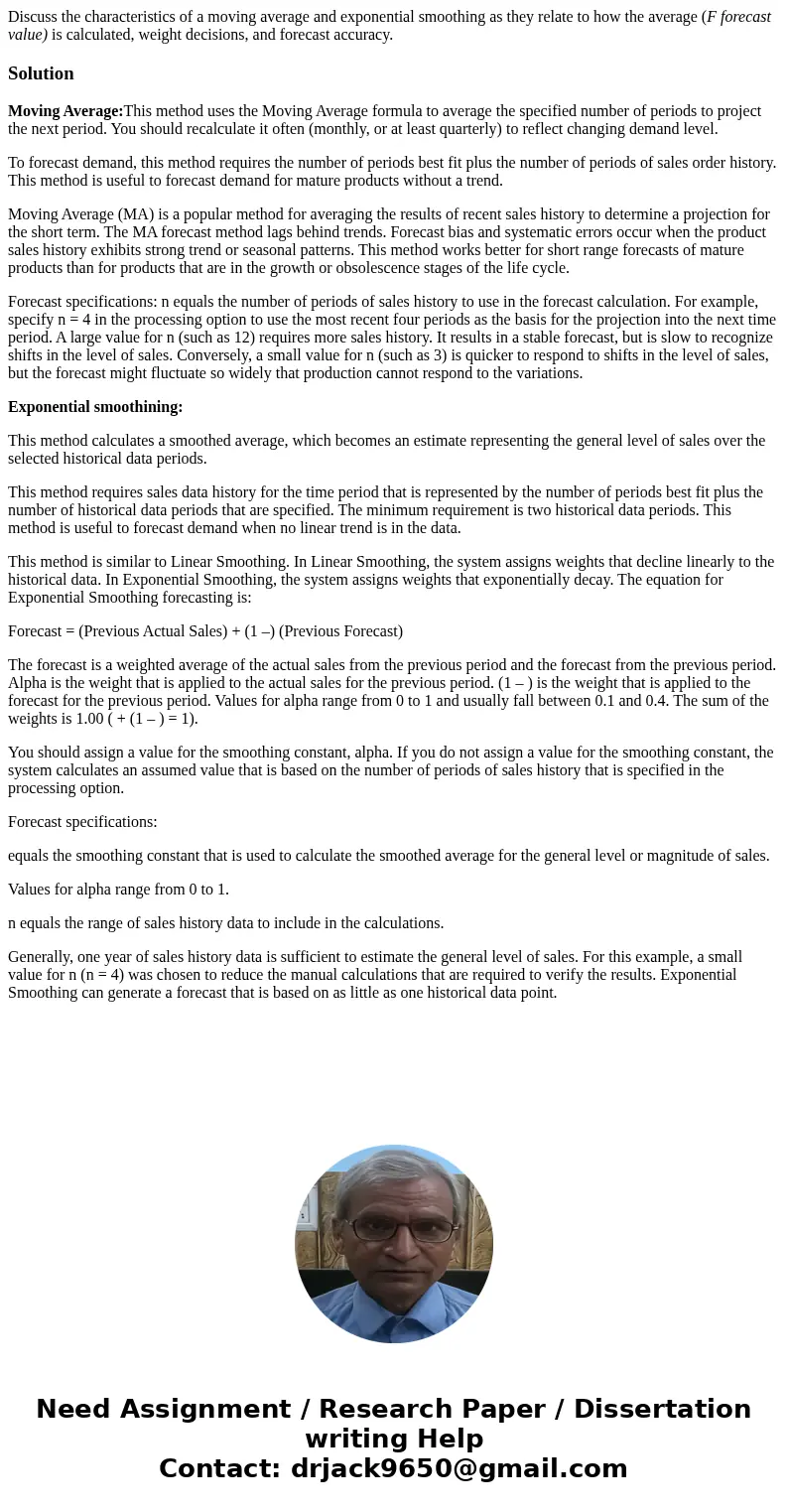Discuss the characteristics of a moving average and exponent
Discuss the characteristics of a moving average and exponential smoothing as they relate to how the average (F forecast value) is calculated, weight decisions, and forecast accuracy.
Solution
Moving Average:This method uses the Moving Average formula to average the specified number of periods to project the next period. You should recalculate it often (monthly, or at least quarterly) to reflect changing demand level.
To forecast demand, this method requires the number of periods best fit plus the number of periods of sales order history. This method is useful to forecast demand for mature products without a trend.
Moving Average (MA) is a popular method for averaging the results of recent sales history to determine a projection for the short term. The MA forecast method lags behind trends. Forecast bias and systematic errors occur when the product sales history exhibits strong trend or seasonal patterns. This method works better for short range forecasts of mature products than for products that are in the growth or obsolescence stages of the life cycle.
Forecast specifications: n equals the number of periods of sales history to use in the forecast calculation. For example, specify n = 4 in the processing option to use the most recent four periods as the basis for the projection into the next time period. A large value for n (such as 12) requires more sales history. It results in a stable forecast, but is slow to recognize shifts in the level of sales. Conversely, a small value for n (such as 3) is quicker to respond to shifts in the level of sales, but the forecast might fluctuate so widely that production cannot respond to the variations.
Exponential smoothining:
This method calculates a smoothed average, which becomes an estimate representing the general level of sales over the selected historical data periods.
This method requires sales data history for the time period that is represented by the number of periods best fit plus the number of historical data periods that are specified. The minimum requirement is two historical data periods. This method is useful to forecast demand when no linear trend is in the data.
This method is similar to Linear Smoothing. In Linear Smoothing, the system assigns weights that decline linearly to the historical data. In Exponential Smoothing, the system assigns weights that exponentially decay. The equation for Exponential Smoothing forecasting is:
Forecast = (Previous Actual Sales) + (1 –) (Previous Forecast)
The forecast is a weighted average of the actual sales from the previous period and the forecast from the previous period. Alpha is the weight that is applied to the actual sales for the previous period. (1 – ) is the weight that is applied to the forecast for the previous period. Values for alpha range from 0 to 1 and usually fall between 0.1 and 0.4. The sum of the weights is 1.00 ( + (1 – ) = 1).
You should assign a value for the smoothing constant, alpha. If you do not assign a value for the smoothing constant, the system calculates an assumed value that is based on the number of periods of sales history that is specified in the processing option.
Forecast specifications:
equals the smoothing constant that is used to calculate the smoothed average for the general level or magnitude of sales.
Values for alpha range from 0 to 1.
n equals the range of sales history data to include in the calculations.
Generally, one year of sales history data is sufficient to estimate the general level of sales. For this example, a small value for n (n = 4) was chosen to reduce the manual calculations that are required to verify the results. Exponential Smoothing can generate a forecast that is based on as little as one historical data point.

 Homework Sourse
Homework Sourse